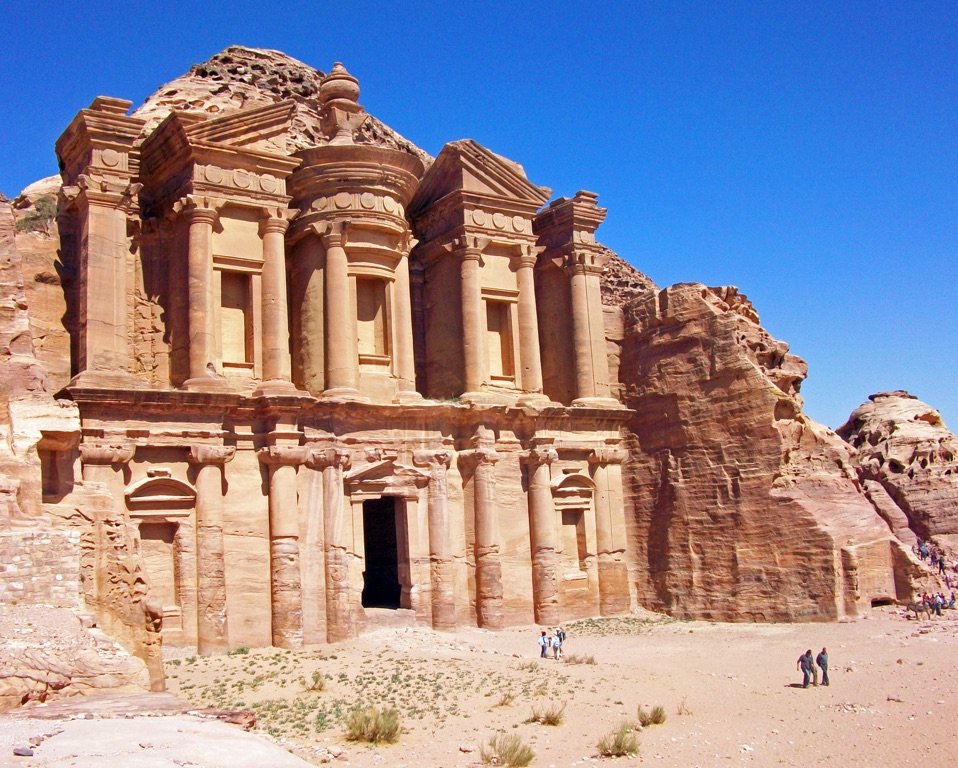Summary
Introduction to Ad Deir
Ad Deir, also known as the Monastery, stands as a monumental testament to Nabatean craftsmanship in Jordan. Carved into rose-red sandstone cliffs, it marks the ingenuity of ancient architects. Built in the 1st century AD, it is significantly larger than Petra’s famous Treasury. It has been a longstanding symbol of Jordan’s rich heritage. Visitors reach it by climbing a steep path that weaves through the mountains, offering breathtaking views. The facade features grand columns and a prominent urn. It serves as a window into the past, where it likely operated as a religious temple or social gathering place.
Get your dose of History via Email
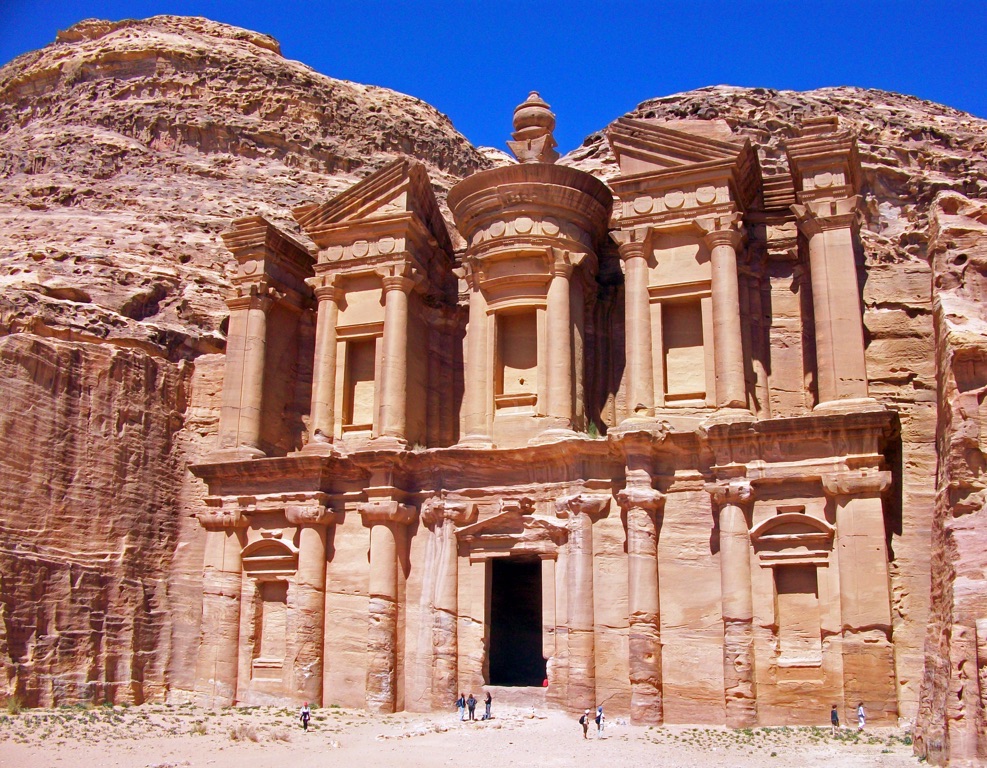
The Architectural Brilliance of Ad Deir
The structure showcases a stunning blend of Hellenistic and Nabatean styles. It measures 45 meters wide and 39 meters high, a true masterpiece of desert rock-cut architecture. The interior holds a single, large chamber with beautifully preserved carvings. Despite centuries of exposure to harsh desert conditions, Deir’s facade remains remarkably intact. Its preservation offers valuable insights into the sophisticated construction techniques and religious practices of the Nabateans. The site also poses an enigmatic aura, as its original purpose and the identity of the deity worshipped within are still unknown.
Ad Deir’s Cultural and Historical Significance
Ad Deir is not just an archaeological wonder but also a cultural icon for Jordan and the Middle East. It encapsulates a blend of ancient trade connections and cultural exchanges through its art and architecture. The site continues to captivate historians, archaeologists, and visitors alike. It is a pivotal part of Petra, a UNESCO World Heritage Site, and plays a significant role in understanding the ingenious spirit of the Nabatean civilization. From spiritual ceremonies to scholarly debates, Ad Deir remains at the heart of Jordan’s historical narrative, a silent guardian of stories etched in stone.
Historical Background of Ad Deir in Jordan
The Origins and Purpose of Ad Deir
The iconic Ad Deir stands as a monumental relic of the Nabatean Kingdom’s architectural prowess in Jordan. Its origins trace back to the 1st century AD, during the heights of Nabatean civilization. Carved directly into the rocky bluffs of Petra, Ad Deir, often referred to as the Monastery, served multiple functions. Initially, it may have been a temple dedicated to Nabatean gods. Over time, it transitioned to a Christian chapel, signifying the dynamic religious landscape. The sheer size of Ad Deir, larger than the famed Treasury, underscores its significance in the ancient world.
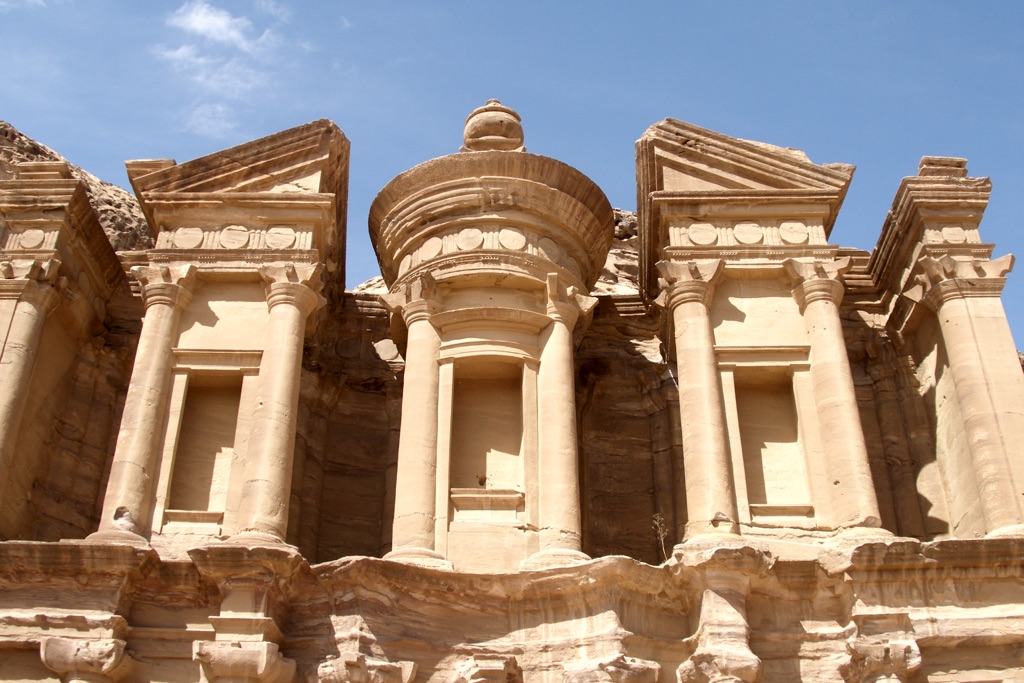
Design and Construction of the Monastery
The architectural design of Ad Deir reveals a sophisticated blend of Nabatean and Hellenistic influences. The facade, adorned with Corinthian-style pillars and a grand urn, dominates the skyline. The impressive entrance leads to a spacious hall, a testament to the mastery of stone-carving. The construction methods used remain a marvel. Skilled artisans chiseled the entire structure from the top down. This method ensured precision and durability that has withstood the test of time. Today, the structure remains remarkably preserved, offering insights into ancient engineering.
The Enigmatic Significance of Ad Deir
Ad Deir’s true purpose remains shrouded in mystery. Experts suggest various roles: a temple, a monastery, or even a place for social gatherings. Its remote location and grand design suggest importance. The inner chamber, with its carved niches and podium, hints at religious rituals. Yet, there is no definitive evidence of the specific gods or traditions associated with Ad Deir. This ambiguity adds to its allure and the continued fascination surrounding it.
Ad Deir within Petra’s Expanse
Ad Deir is a highlight in the ancient city of Petra, Jordan’s archaeological gem. To reach Ad Deir, one must undertake a climb of over 800 steps, carved into the mountainside. This journey not only presents a physical challenge but also a symbolic ascent to one of Petra’s highest elevations. The overview of the surrounding valleys and gorges from Ad Deir adds to the site’s dramatic effect. Its position within Petra reflects the overarching mastery and ambition of Nabatean urban planning.
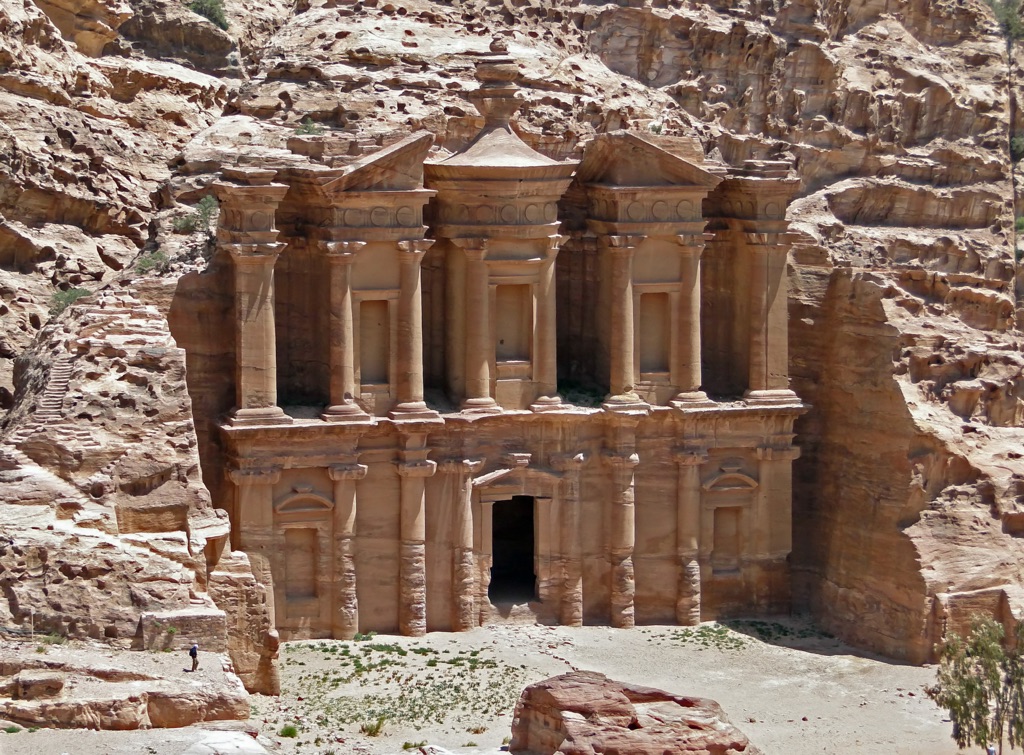
Cultural Legacy and Modern-Day Resonance
Ad Deir’s enduring magnificence contributes to the living cultural tapestry of Jordan and the Middle East. It draws thousands of visitors annually, eager to experience its grandeur firsthand. As part of the UNESCO-listed heritage site of Petra, Ad Deir offers a window into the rich history that shaped the region. Its preservation and study remain vital for understanding our collective past. Ad Deir not only commemorates the accomplishments of the Nabateans but continues to inspire awe and respect in modern times.
The Discovery of Ad Deir in Jordan
Rediscovery by the Western World
Ad Deir, the ancient architectural marvel, was reintroduced to the Western world in the early 19th century. Swiss explorer Johann Ludwig Burckhardt, known for his travels in the Middle East, stumbled upon it in 1812. Disguised as an Arab scholar, Burckhardt heard tales of a lost city hidden in the desert cliffs. His adventurous spirit led him to Petra, where he uncovered Ad Deir high in the mountains. This discovery was pivotal, as it shed light on the lost Nabatean civilization for Western scholars.
The Role of Local Bedouins
While Burckhardt is credited with Ad Deir’s ‘discovery,’ it’s important to note that local Bedouin tribes knew of its existence. For centuries, they guarded the secrets of Petra and its monuments, including Ad Deir. The Bedouins played a crucial role in guiding explorers, such as Burckhardt, through the labyrinth of canyons to the site. Their knowledge of the terrain and the history of Ad Deir was invaluable in understanding its context and significance.
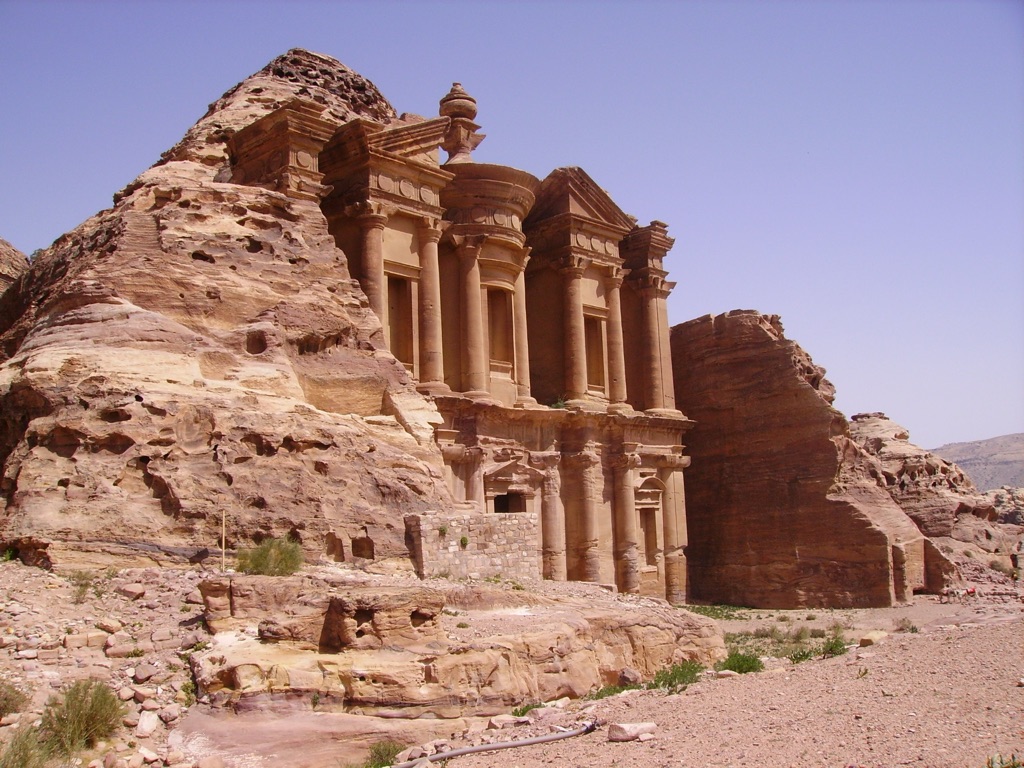
Archaeological Interest and Excavations
Following Burckhardt’s discovery, Petra and Ad Deir became a focal point for archaeologists and historians. Multiple expeditions took place, aimed at uncovering the history and function of Ad Deir. In the 20th century, detailed excavations began to reveal intricacies of its construction. They found clues that helped piece together the site’s rich past. Due to these efforts, the world now understands the architectural and cultural importance of this amazing place.
Ad Deir in Modern Times
In the present day, Deir’s fame has transcended academic interest. It has become a symbol of Jordanian heritage and a major tourist attraction. With each year, thousands embark on the journey to witness Ad Deir’s grandeur firsthand. Its dramatic relief against the desert background captivates photographers and adventurers alike. This increased attention has spurred on conservation efforts to preserve it for future generations.
Impact on Historical Understanding
Ad Deir’s discovery in modern times has profoundly impacted our understanding of human history. It serves as a crucial link to Jordan’s antiquity and the broader historical narrative of the Middle East. Through continued research and preservation, Ad Deir will remain a beacon of ancient ingenuity. It forever signifies the rediscovery of a civilization that shaped the course of history.

Cultural Significance, Dating methods, Theories and Interpretations
Unraveling the Timeline of Ad Deir
Dating has been pivotal in understanding its chronology and the Nabatean era in Jordan. Scholars have utilized various methods, including comparative architectural analysis and pottery typology. The style of the facade’s columns and inscriptions relates Ad Deir to the 1st century BC to the 2nd century AD. Coin evidence further supports these findings, as Nabatean currency from this period has been found nearby. Such methods help pinpoint the era of its carving, shedding light on the historic context of its creation.
Theories Behind Ad Deir’s Purpose
Theories about its original function abound. While its name suggests a monastic use, many believe it was initially a Nabatean temple or tomb. Its grand scale and design signify a space of significant importance, perhaps even royal. Some suggest it linked to astrological events or seasonal changes, functioning as a calendar. However, no definitive evidence has confirmed these theories, so the debate continues.
Ad Deir and Nabatean Culture
its role in Nabatean culture cannot be understated. It symbolizes the ingenuity and aesthetic values of this ancient civilization. Its religious significance is alluded to by the altar-like niches inside. The site likely played a role in ceremonial practices, linking it to the cultural and spiritual life of the Nabateans. Its remote location also suggests it may have been a pilgrimage site, deepening its cultural resonance.
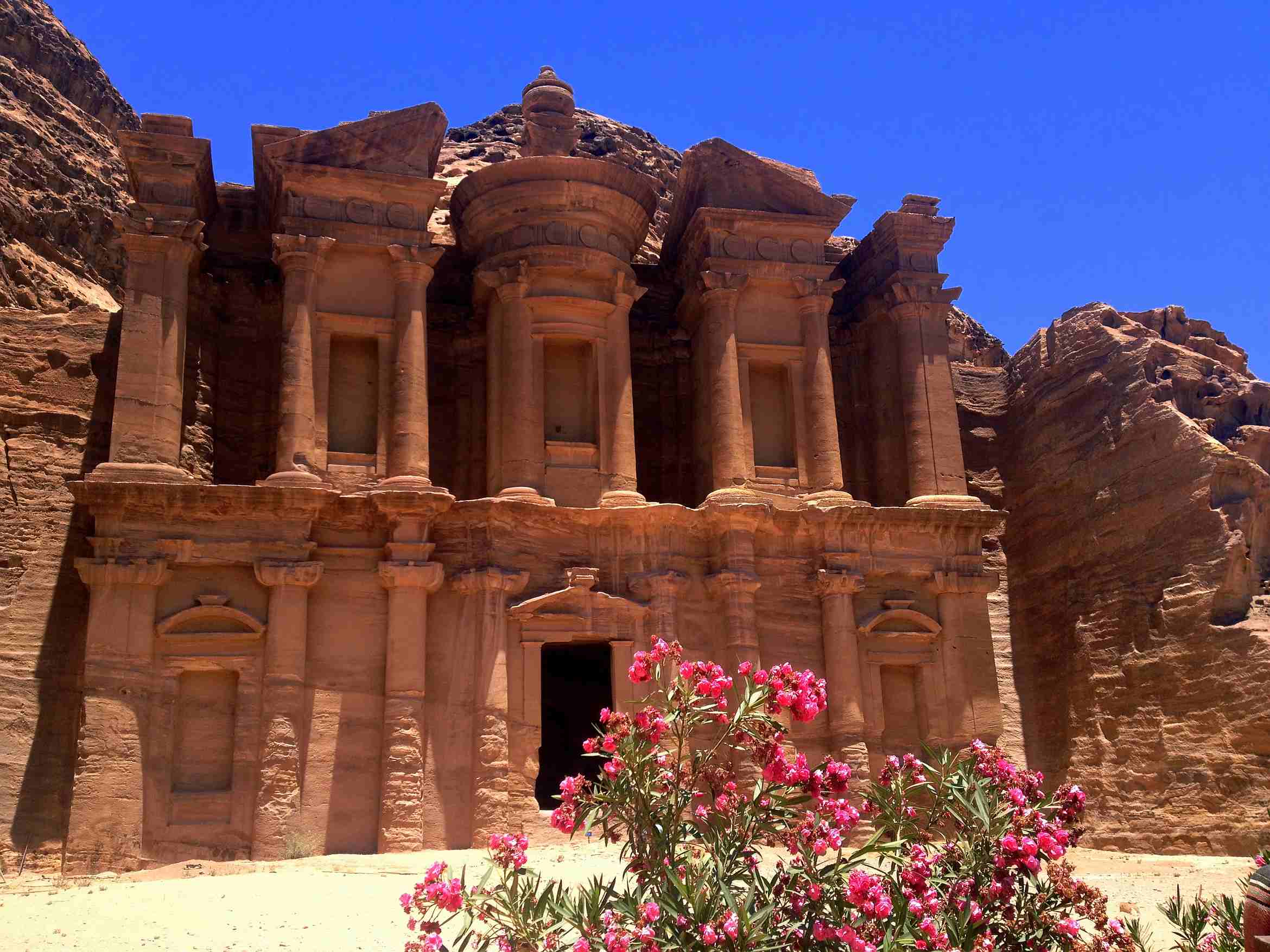
Interpretations of Iconography and Artwork
Ad Deir’s artwork offers clues to its interpretation. The façade features classical motifs, such as acanthus leaves, which suggest links to the wider Hellenistic world. The iconography within the chamber hints at religious connotations. Yet, the absence of clear deific imagery has puzzled scholars. Some interpret this as a sign of the Nabateans’ unique pantheon, which blended local and imported deities.
Impact on Modern Perceptions of Antiquity
Modern interpretations of Ad Deir affect how we perceive the ancient world. Its rediscovery forced a re-evaluation of Middle Eastern history, particularly the sophistication of the Nabateans, previously overshadowed by Roman and Greek narratives. As a focal point of Petra, it plays a crucial role in the ongoing exploration of ancient cross-cultural exchanges and architectural innovation.
Conclusion and Sources
In conclusion, the intricate history and the stunning architecture contribute immensely to our understanding of the Nabatean civilization. As a monumental edifice carved out of sheer rock face, Ad Deir stands as a testament to the remarkable engineering and artistic skills of its creators. The ongoing scholarly debates and archaeological investigations continue to enrich our comprehension of its origins, purpose, and cultural significance within the context of the ancient world. The findings and conjectures surrounding Ad Deir not only enhance the allure of Petra as a historical and cultural site but also illustrate the broader human endeavors in art, religion, and societal development. Therefore, Ad Deir’s enigmatic presence continues to captivate visitors and researchers, promising further insights into the past and enduring as a cultural jewel in Jordan’s crown.
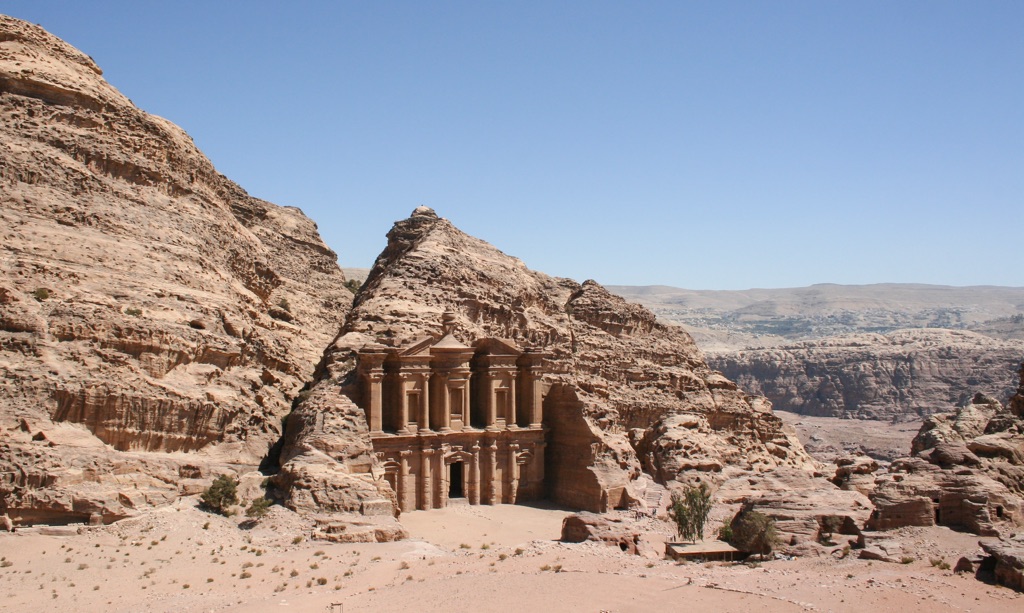
For further reading and to validate the information presented in this article, the following sources are recommended:
Or you can check any of these reputable archaeological and historical texts:
Johann Ludwig Burckhardt (2007) ‘Travels in Nubia’, Cambridge University Press. [Originally published in 1819].
Petra National Trust (n.d.) ‘Petra: The Great Temple.
Markoe, G. E. (2003) ‘Petra Rediscovered: The Lost City of the Nabataeans’, Harry N. Abrams.
Bikai, P. M. (1997) ‘The Pottery of Petra’, American Center of Oriental Research.
Brown University (2017) ‘The Petra Great Temple’, Brown University.
UNESCO (n.d.) ‘Petra’, UNESCO World Heritage Centre.

